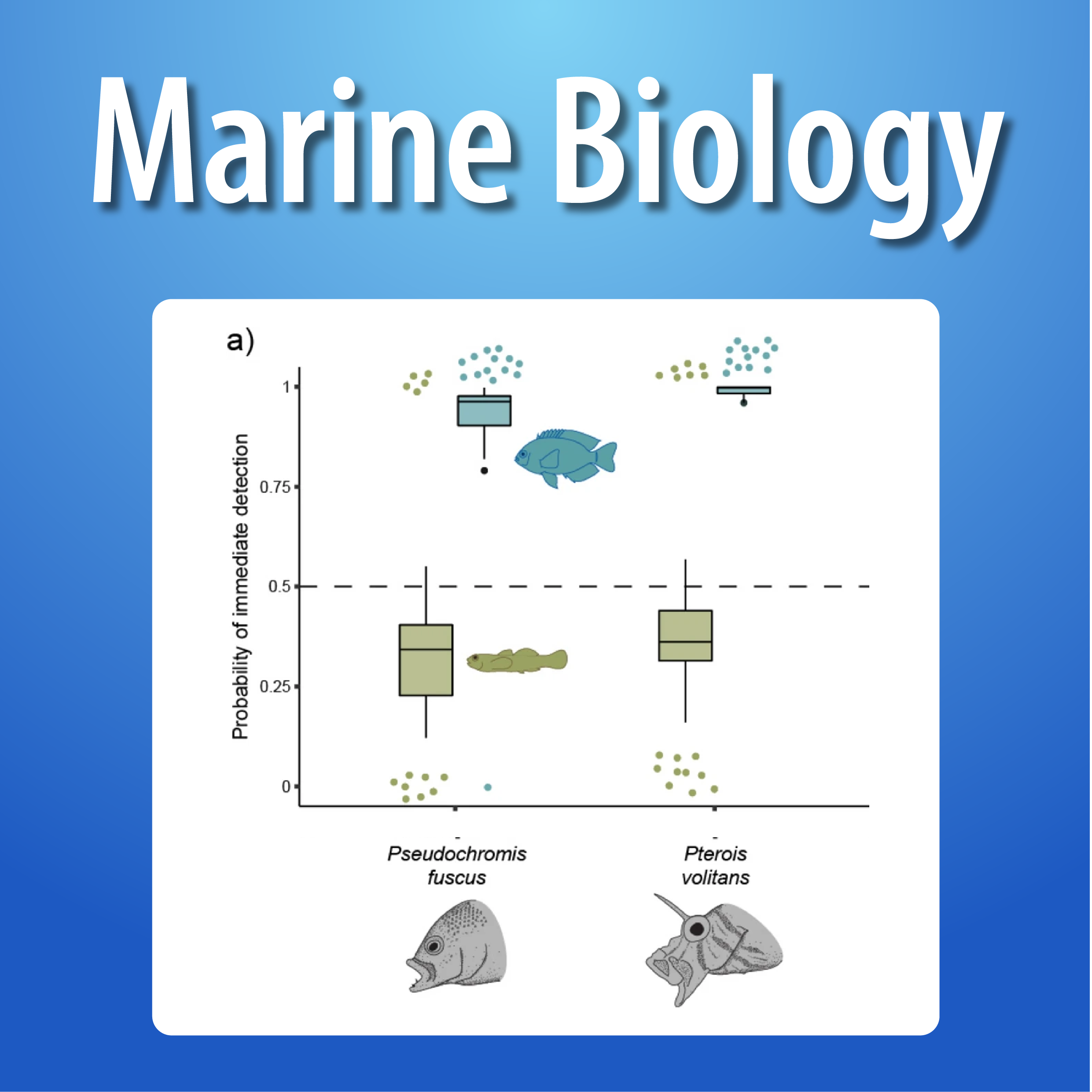Sit and survive: predation avoidance by cryptobenthic coral reef fishes
Michalis Mihalitsis, David Bellwood & Peter Wainwright
Abstract:
Predation is a crucial ecosystem function, transferring nutrients and shaping the abundance and diversity of animals within communities. On coral reefs, fish-fish predation (i.e., piscivory) is arguably one of the best known ecosystem functions, yet is also one of the least well quantified. Recent work has suggested that the prey capture performance of piscivorous fishes may differ when feeding on actively swimming vs. cryptobenthic fish prey. However, the extent of this difference remains unquantified. Our goal, therefore, was to conduct performance-based experiments comparing piscivorous fishes feeding on two different fish prey types, namely, actively swimming vs. cryptobenthic prey (i.e., prey sitting on the benthos). While predators were able to immediately detect actively swimming prey, when feeding on cryptobenthic prey, predators were generally unable to detect the prey until it moved. Both focal predators, the grabber Pseudochromis fuscus and the engulfer Pterois volitans were less successful at capturing cryptobenthic prey (mean 28% probability of capture), compared to actively swimming prey (85%). Overall, our study demonstrates the heterogeneous nature of fish predation on coral reefs, and the challenges of feeding on different prey functional groups.

